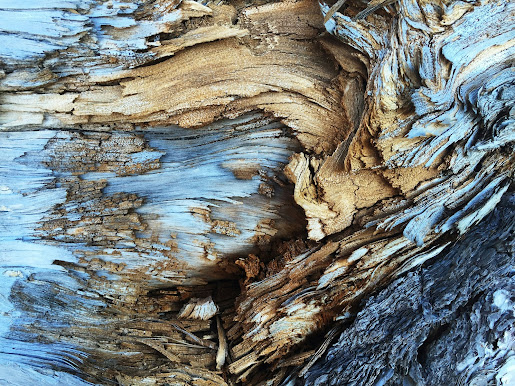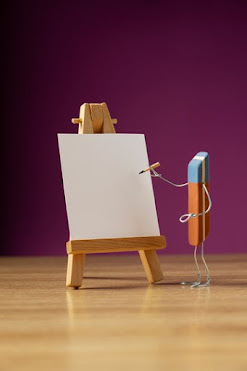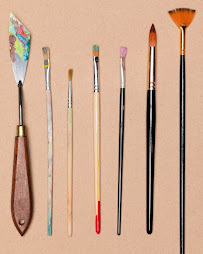Exploring the Beauty of Plaster Art on Canvas
In the field of art, imagination has no boundaries. Artists constantly search for new ways to express themselves and engage their audience, whether through traditional paintings or sculptures. Canvas plaster art is one such medium that has grown in popularity recently. With this special method, the canvas's rough surface and the plaster's adaptability combine to create visually appealing and tactile artwork.
What is Plaster Art on Canvas?
Applying layers of plaster to a canvas surface to create depth and texture is known as plaster art on canvas or plaster relief painting. Plaster can be altered by artists using various tools and methods to create complex patterns, shapes, and even three-dimensional forms. To improve the plaster's appearance, it might be painted, stained, or coated with other materials once it has dried.
The Method for Producing Canvas Plaster Art
It is a multi-step process which requires patience, skill, and creativity. The following is a step-by-step guide as to how this could be accomplished:
- Preparation: Set up your canvas surface first. Make sure the
canvas is smooth and wrinkle-free before stretching it onto a wooden frame. To
protect the canvas and create a flat surface for the plaster, apply primer.
- Plastering: Apply small layers of plaster to the canvas
surface using a utility knife or other comparable tool. Layers can be added to
provide depth and texture, or the plaster can be manually sculpted to produce
raised patterns or designs. Try a variety of strategies to get the desired
result.
- Adjustment and Building: You can use a variety of tools to
work with the plaster while it's still wet to add texture, lines, and shapes.
Try moulding the plaster into complex patterns by using brushes, combs, or even
your fingertips. Between layers, let the plaster partially dry to avoid fading
or deformation.
- Drying and Curing:
Give your plaster design time to fully dry if you're happy with it. The
plaster's thickness and its context can determine how long this process takes
over multiple hours or even days. To keep the surface from cracking or breaking
while it cures, be patient and do not disturb it.
- Final Touches: Your artwork needs to be finished and colored once the plaster is fully dried and hardened. To improve the texture and depth of the plaster, you may apply stain or add patinas [a thin layer on the surface] or paint the plaster with acrylics, oils, or other appropriate paints. Try out various methods to obtain the look you want.
Advantages & Disadvantages of using Plaster Art on Canvas
|
Why one should use Plaster
Art on Canvas |
Difficulties in
using Plaster Art on Canvas |
|
|
Specialized Materials and Techniques: Plaster on canvas
involves certain tools and methods that not all artists have access to or are
comfortable with. It may take some time, effort, and experimentation to
become an expert in the preparation and handling of plaster. |
|
Depth and Texture: Plaster art on canvas, in comparison with standard
two-dimensional paintings, gives the piece depth and texture, allowing the
viewer a memorable experience. |
Weight: Especially when plaster is placed in numerous layers, canvas
painted with plaster can be heavy. This might make hanging or moving the
artwork difficult and require strong support and cautious handling. |
|
Strength: Plaster on canvas
painting has a long lifespan if it is properly cured and sealed. Compared to
more sensitive media, it is less prone to damage from moisture, sunshine, or
other environmental variables. |
Sensitivity: Plaster that has
been sufficiently cemented and sealed may withstand impact and misuse, but it
is still delicate. The overall aesthetic appeal of the artwork may be reduced
by chips, cracks, or breaks in the plaster surface, which would ask for
repair. |
|
Expressiveness: As plaster is
visual, painters can use it to convey emotion, movement, and energy on
canvas. Using dramatic sculptural components or delicate textures, it offers
a dynamic and expressive way to communicate artistic ideas. |
Time-Consuming Process: Thorough attention to detail and
patience are necessary during the time-consuming procedure of creating
plaster art on canvas. The plastering process requires a certain amount of
time to cure between layers, so the artwork's total production time must be
increased. |
Conclusion;
To sum up, plaster art on canvas is a flexible and fascinating medium that enables artists to push the limits of traditional painting and discover new possibilities for expression, texture, and depth. Plaster art on canvas presents an infinite opportunity for creative discovery and artistic innovation, regardless of your level of experience as an artist. Even the most interested beginner may get started and explore new ideas with this medium.



Comments
Post a Comment